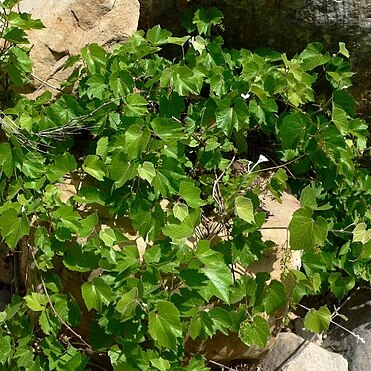A vine. It climbs weakly. The stems are 2-6 m long. Young twigs are densely hairy. The leaves are broadly heart shaped and 3-10 cm long and wide. They have irregular teeth and can have lobes. There are tendrils opposite the leaves. The flowering shoots are opposite the leaves. The flowers have 5 white petals. The fruit are in clusters. The fruit are small. They are 8-10 mm across and black.

